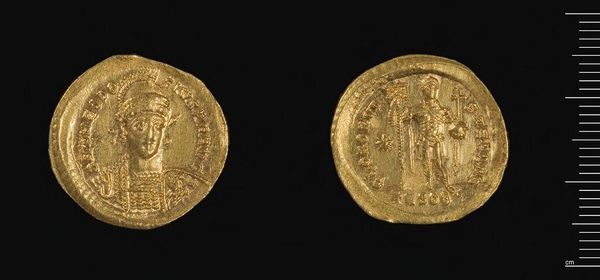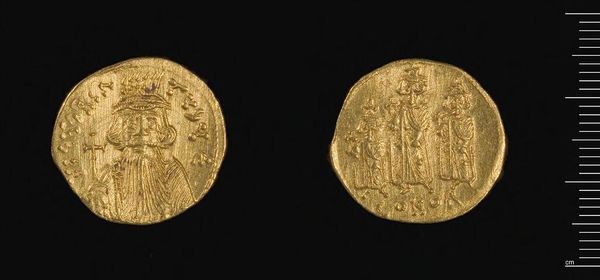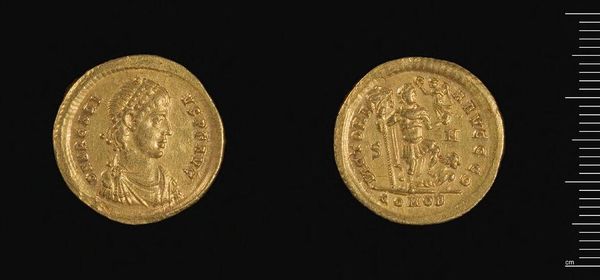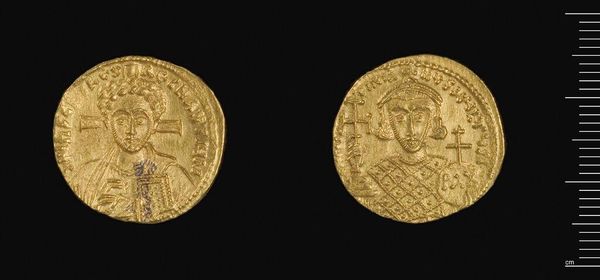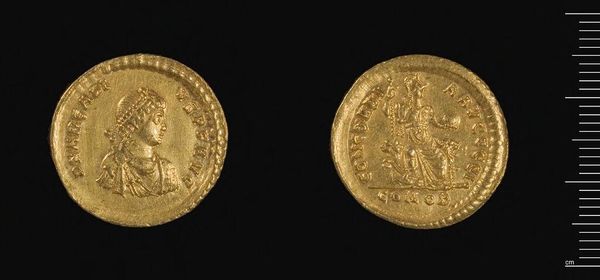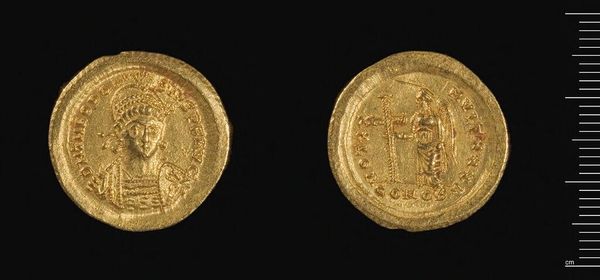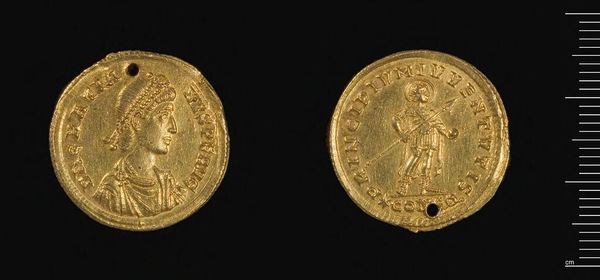
Dimensions: 4.46 g
Copyright: CC0 1.0
Curator: At first glance, the striking thing is the sheer opulence of the gold! It speaks volumes about wealth and power. Editor: Indeed. We’re looking at a “Coin of Leo III,” currently residing at the Harvard Art Museums. These aren't just pretty objects; they're historical documents. Curator: Absolutely! Consider the labor and resources needed to mine, refine, and mint this gold. The coin, at 4.46 grams, represents concentrated value and control over material production. Editor: And think about its function. These coins weren't just about trade; they were instruments of propaganda, circulating images of the emperor and reinforcing his authority throughout the Byzantine Empire. Curator: It makes you wonder about the skilled artisans who physically crafted each coin and how their labor contributed to the emperor's image. Editor: Ultimately, these coins offer a fascinating glimpse into the economic and political underpinnings of Byzantine society. Curator: I agree. It highlights the convergence of material value, labor, and political power inherent in even the smallest artifacts. Editor: It is a lasting example of how art helps write the history of power structures.
Comments
No comments
Be the first to comment and join the conversation on the ultimate creative platform.



